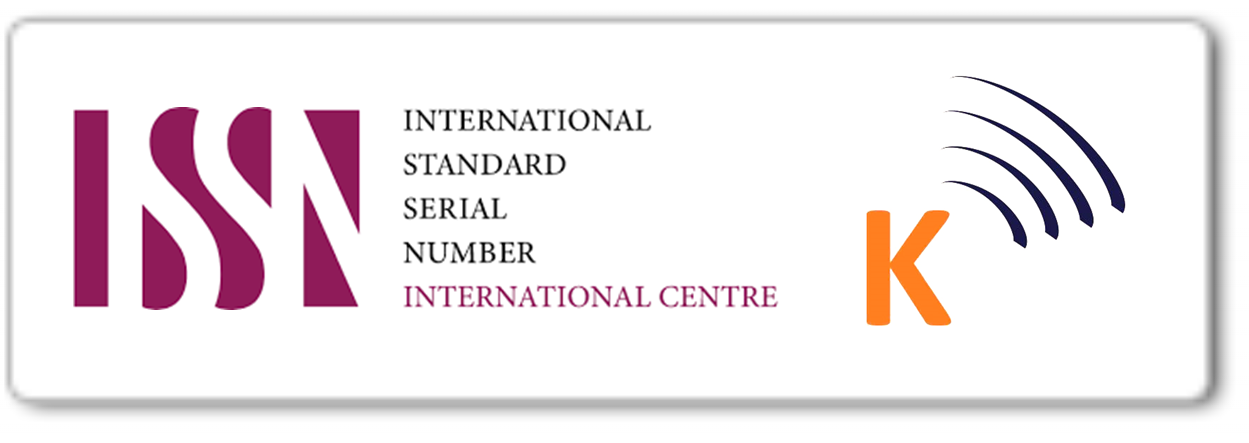KONTRIBUSI APLIKASI SISTEM MANAJEMEN PEMBELAJARAN BERBASIS SIBER TERHADAP KOMPLEKSITAS MANAJEMEN TINDAKAN KELAS
Keywords: Education, Learning model, LMS, model pembelajaran, pendidikan, sistem manajemen pembelajaran, Technology, teknologi
Abstract
This study investigates theories about the sophistication of cyber technology-based classroom management through learning management system application. The research aims to capture the problems of an institutions in Indonesia regarding the urgency of using cyber technology to support the effectiveness and efficiency of learning models. By identifying the obvious problems, a model for implementing classroom action management is sought, especially the stages or prerequisite. that must be met for the implementation of 21st Century Education. The research method using descriptive-qualitative begins with a literature study, in-depth interviews with respondents involved using the snowball sampling technique. The literature study and interviews results are to be discussed in a focus group discussion (FGD) conducted by 4 teachers at ITB Ahmad Dahlan Jakarta forum to conduct needs assessments and equalize perceptions (intersubjectivity) for academics, students, and education staff. Thus, comprehensive conclusions and recommendations for optimizing the implementation of Education in 21st Century.
Penelitian ini menginvestigasi sejumlah teori tentang kecanggihan (sophistication) manajemen kelas berbasis teknologi siber melalui aplikasi sistem manajemen pembelajaran (learning management system). Tujuan penelitian ini adalah memotret problematika sejumlah institusi pendidikan tinggi di Indonesia tentang urgensi teknologi siber guna pendukungan terhadap efektifitas dan efisiensi model pembelajaran di Abad 21. Dengan mengidentifikasi permasalahan yang mengentara, maka dicarikan model implementasi manajemen tindakan kelas, terutama tahapan-tahapan atau prasyarat yang harus dipenuhi untuk pelaksanaan Pendidikan Abad 21. Metode penelitian menggunakan deskriptif-kualitatif diawali dengan studi pustaka, indepth interview kepada responden terlibat dengan menggunakan teknik snowball sampling. Hasil studi pustaka dan wawancara dijadikan didiskusikan dalam forum focus group discussion (FGD) yang dilakukan oleh 4 orang pengajar di ITB Ahmad Dahlan Jakarta, guna melakukan needs assessment dan penyetaraan persepsi (intersubjektivitas) para akademisi, mahasiswa dan tenaga kependidikan baik. Dengan demikian didapat simpulan komrehensif dan rekomendasi-rekomendasi untuk optimasi pelaksanaan Pendidikan Abad 21.
Downloads
References
Adams N. E. (2015). Bloom's taxonomy of cognitive learning objectives. Journal of the Medical Library Association : JMLA, 103(3), 152–153. https://doi.org/10.3163/ 1536-5050.103.3.010.
Bandura, A. (2001). Self-efficacy: The exercise of control. New York. WH Freeman.
Beyer, L., & Niemier, K. (2018). Funktionsstörungen am Bewegungssystem. Manuelle Medizin, 56(4), 293-299.
Bryan. (2016). Blended Learning: Definition, Models, Implications for higer education. DOI: 10.14529/ped160204.
Budiharto, dkk. (2019) Membangun Konsep Organisasi Autentik: Kajian Meta-Etnografi Vol. 27, No.2,159–172 ISSN 2528-5858 (Online) DOI: 10.22146 / buletinpsikologi. 43267.
Cañas, H., Mula, J., DÃaz-Madroñero, M., & Campuzano-BolarÃn, F. (2021). Implementing Industry 4.0 principles. Computers & industrial engineering, 158, 107379.
Carmen, J. A. (2005). Blended Learning Design: Five Key Ingredients. (Online). http://www.agilantlearning.com/pdt/Blended-Learning-Design.pdt/). Diakses tanggal 1 Januari 2022.
Chauhan, S. (2017). A meta-analysis of the impact of technology on learning effectiveness of elementary students. Computers & Education, 105, 14-30.
Deane, P., Odendahl, N., Quinlan. T., Flowles, M., Welsh, C., & Tatum, J. B. (2008). Cognitive Models of Writing: Writing Proficiency as a Complex Integrated Skill. Retrieved February 9, 2014, from https://www.ets.org/Media/Research/pdf/RR- 08-55.pdf.
Driscoll, M. (2002) Blended Learning: Let’s Get beyond the Hype. IBM Global Services. http://www-07.ibm.com/services/pdf/blended_learning.pdf.
El Miedany, Y. (2019). Flipped learning. In Rheumatology Teaching (pp. 285-303). Springer, Cham.
Erwinsyah, A. (2017). Manajemen kelas dalam meningkatkan efektifitas proses belajar mengajar. TADBIR: Jurnal Manajemen Pendidikan Islam, 5(2), 87-105.
Fallon, G. (2011). Making the Connection: Moore's Theory of Transactional Distance and Its Relevance to the Use of a Virtual Classroom in Postgraduate Online Teacher Education. JRTE, Vol. 43, No. 3, pp. 187–209.
Guskey, T. R., Sparks, D. (2004). Linking professional development to improvements in student learning. In E. M.
Heinze A & Procter C. (2010). The Significance of the Reflective Practitioner in Blended Learning. International Journal of Mobile and Blended Learning, (IJMBL) 2(2). DOI 10.4018/jmbl.2010040102.
Hendarita, Y. (2018). Model Pembelajaran Blended Learning dengan Media Blog. Diakses pada 21 September 2021 dari https://sibatik.kemdikbud.go.id/inovatif/assets/ file_upload/pengantar/pdf/pengantar_3.pdf.
Hoy, A. (2005). Changes in teacher afficacy during the early years of teaching: A comparison of four measures. Teaching and Teacher Education, No. 21.
Kasim, N. N. M., & Khalid, F. (2016). Choosing the right learning management system (LMS) for the higher education institution context: A systematic review. International Journal of Emerging Technologies in Learning, 11(6).
Lavin, A., Gilligan-Lee, C. M., Visnjic, A., Ganju, S., Newman, D., Ganguly, S., ... & Parr, J. (2021). Technology readiness levels for machine learning systems. arXiv preprint arXiv: 2101.03989.
Levin, J., Kerr, J.E., & Elliott, A.E. (2005). Principles of Classroom Management: A Professional Decision-making model. Toronto, ON: Pearson, Education Canada, Inc.
Mamahit, C. E. (2021). Pengaruh pembelajaran jarak jauh model bauran terhadap hasil belajar dan persepsi mahasiswa [the effect of the blended learning model on student learning outcomes and perceptions]. Polyglot: Jurnal Ilmiah, 17(1), 67-83.
Mohanta, B., Nanda, P., & Patnaik, S. (2020). Management of VUCA (Volatility, Uncertainty, Complexity and Ambiguity) Using machine learning techniques in industry 4.0 paradigm. In New Paradigm of Industry 4.0 (pp. 1-24). Springer, Cham.
Moore, M. (1997). Theory of transactional distance. In D. Keegan (Ed.), Theoretical principlesof distance education (pp. 22–38). New York: Routledge.
Nastiti, dkk. (2020). Kesiapan Pendidikan Indonesia Menghadapi Era Society 5.0. Edcomtech: Jurnal Kajian Teknologi Pendidikan, Vol.5. No. 1.
Plotnik, R., & Kouyoumijian, H. (2011). Introduction to psychology. Belmont, CA: Wadsorth.
Ramsay. (2001). Teaching and Learning with Information and Communication Tecnology: Succes Througha Whole School.
Richardson. (1996). The role of attitudes and beliefs in learning to teach. Hanbook of Reasearch on Teacher Education, (pp.102-119). Second Edition.
Tatnall. A. (2019). Researching Computers and Education Through Actor-Network Theory. Sustainable ICT, Education and Learning. Ed: Tatnall, A. and Mavengere, N. Switzerland, Springer: 78-88.
Thomas Kuhn. (1970). Criticism and the growth of knowledge: Volume 6: Proceedings of the International Colloquium in the Philosophy of Science, London.
Vigdor, Jacob. L. (2006). How and why the teacher credentials matter for student achievement? Sanford Institute, Duke University.
Watkins, Chris & Wagner, Patsy (2000). Improving School Behaviour. Paul Chapman Publishing Ltd. A SAGE Publications Company. 6 Bonhill Street. London EC2A 4PU.







